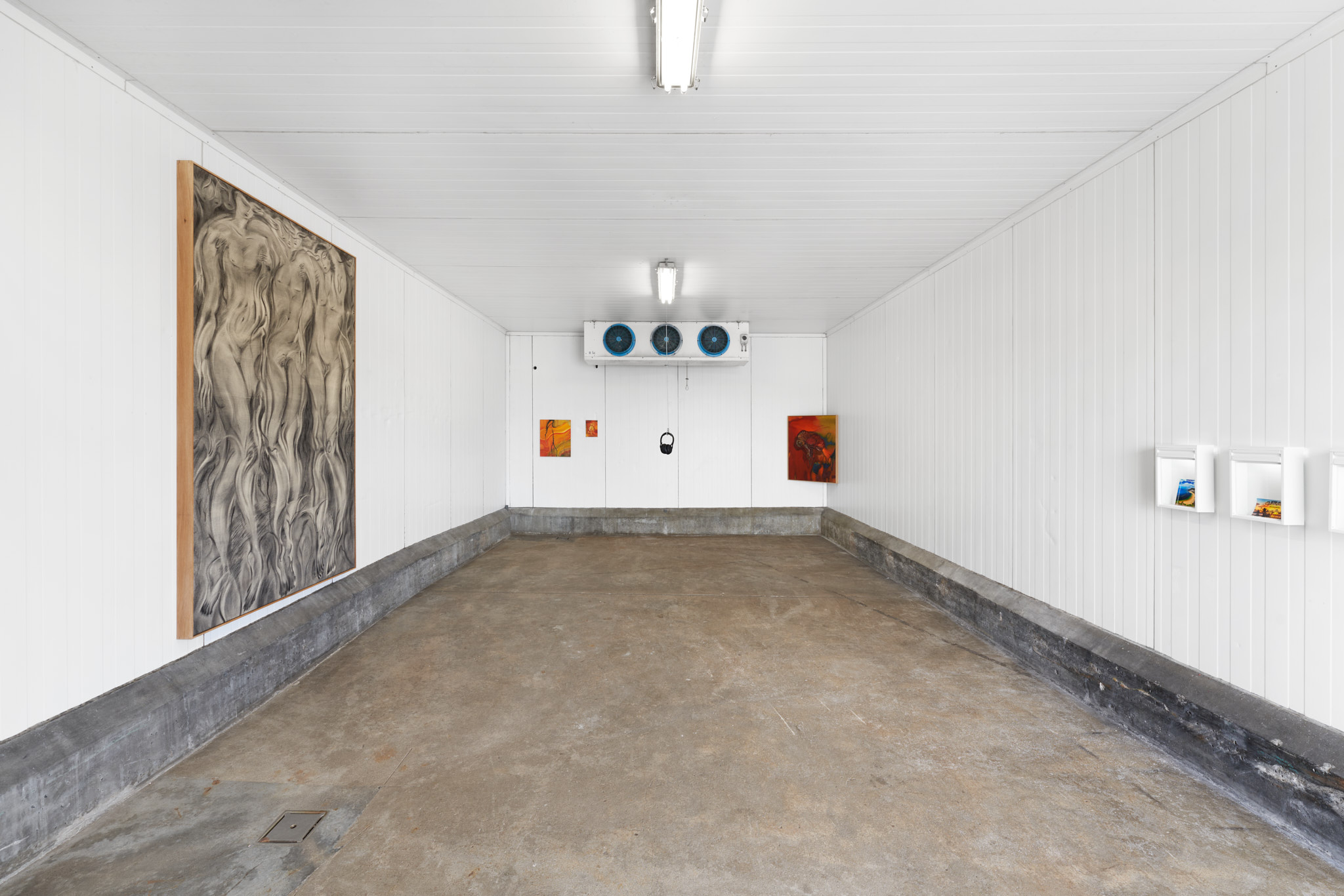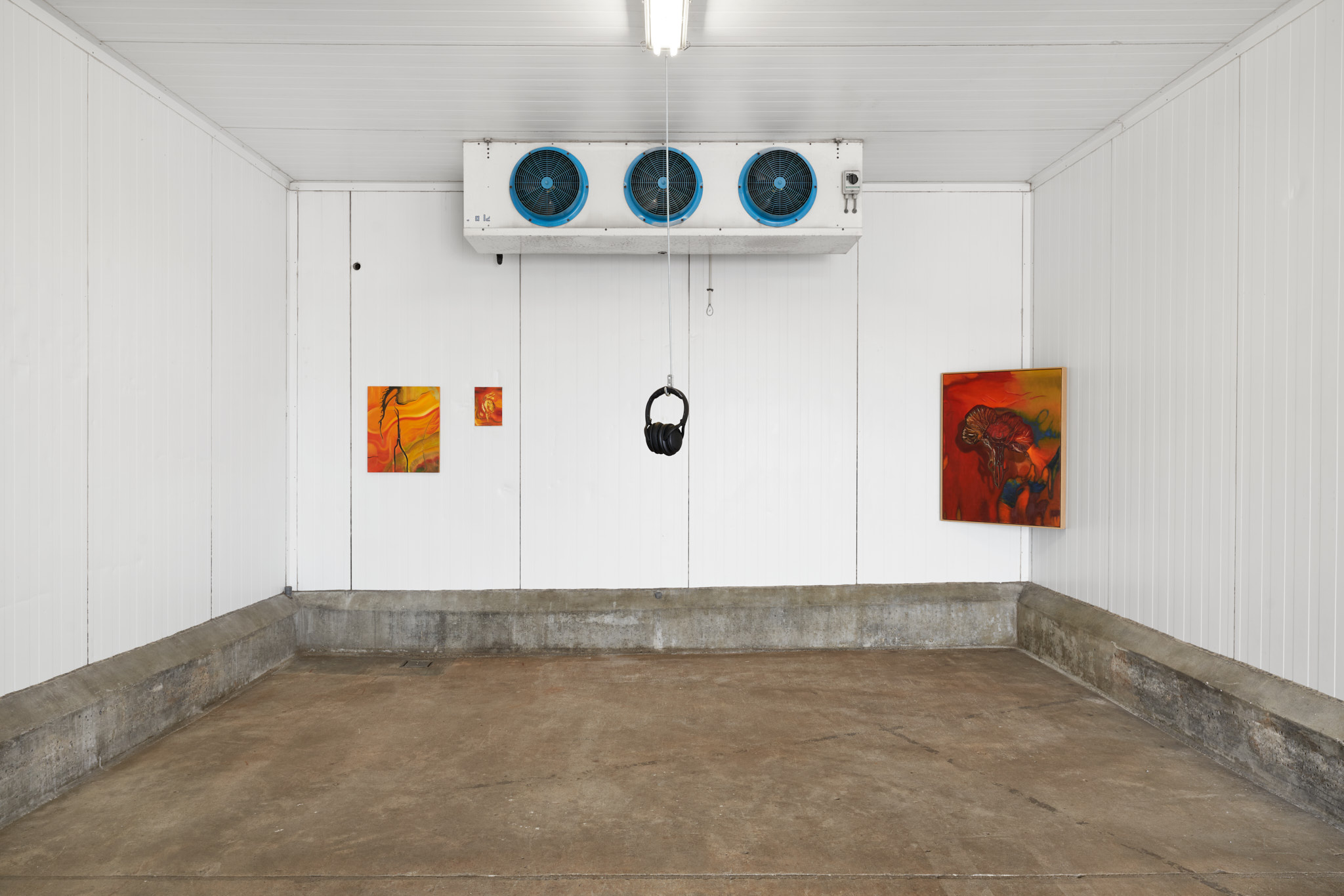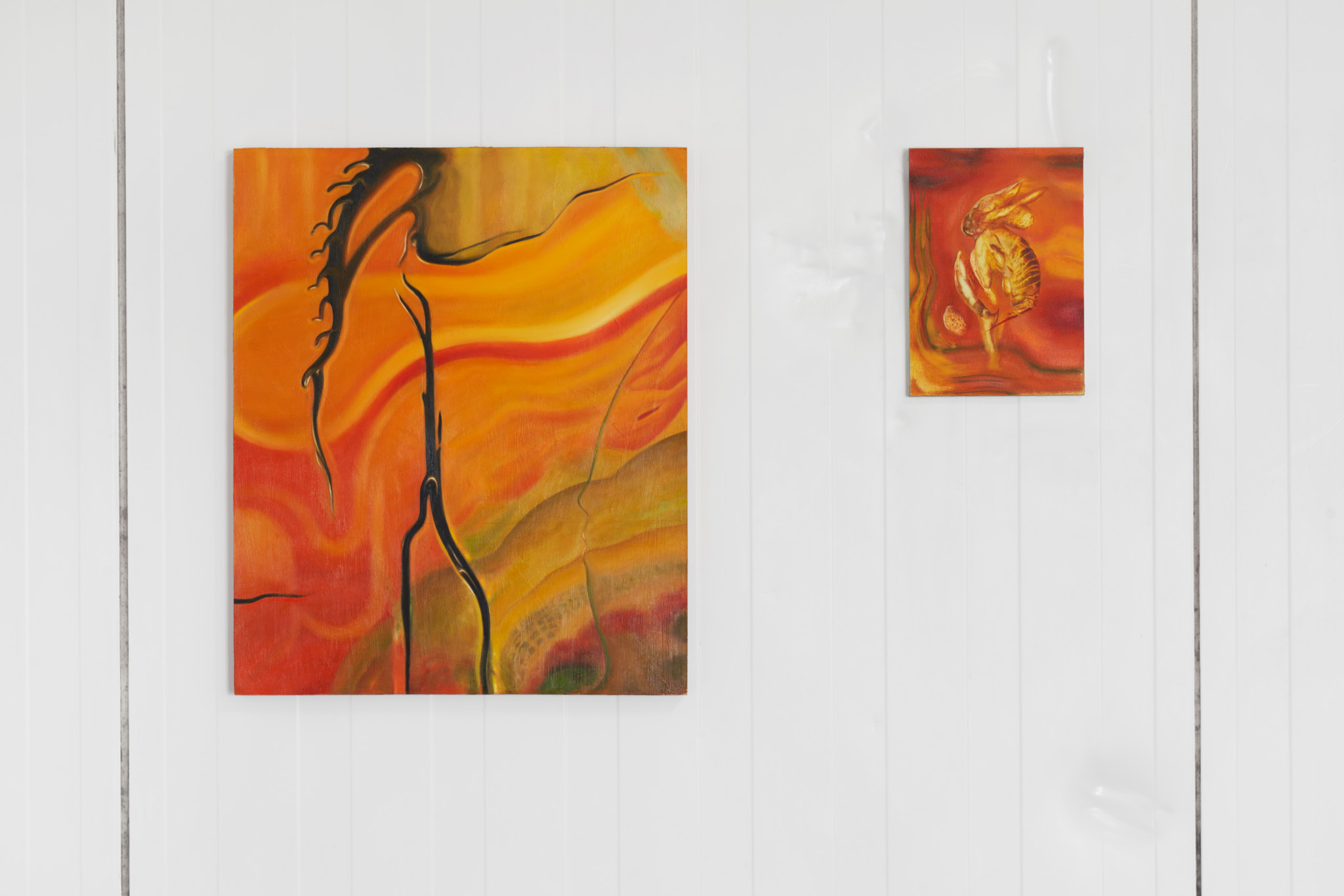LISTEN TO THE SOUND PIECE FROM THE EXHIBITION BY IDA RETZ WESSBERG
















*Dansk version her *
It is with great pleasure that SOL Nexø presents Kinga Bartis, Sissel Marie Tonn, Enar de Dios Rodríguez, Ida Retz Wessberg and Emilie Imán in the international exhibition Bodies of Water. The exhibition runs from August 5th to August 28th 2023.
Inspired by the hydrofeminist philosopher Astrida Neimanis' "Bodies of Water", the exhibition brings the healing, sacred and omnipresent powers of water into play and places solidarity across species on the agenda. Through various means of artistic expression, the artists question the juncture between “me” and “you”, “us” and “them”, “here” and “there” in an effort to challenge the boundaries established between watery bodies and beings. It is in the in-between, the transitory; the fluid state of mind and creation that we find common ground.
Tension as the home we share
Bodies of Water is inspired by the biological concept of the “ecotone”. Originating from Greek and derived from the words “eco” (meaning household, home, living environment) and “tone” (translates into tension). The notion of the ecotone is used to describe a transitory area where two communities, two bodies of water, meet and integrate. The ecotone teaches us how to cohabit in togetherness with all species, finding a shared home in tension. As Neimanis reminds us: it is only in the ecotone we can achieve comfort - no other home is available. Applying the ecotone as a curatorial method, Bodies of Water draws from a variety of artistic research. From conventional and scientific knowledge, through embodied wisdom, personal experiences and intergenerational wisdom, the exhibition orients itself towards abstract and philosophical ideas about water as a connecting entity between all watery beings on the planet. The water functions as a reminder of the fragility within all of Earth's entangled ecosystems and emphasises the necessity of coexistence as opposed to exploitation and oppression of each other and of more-than-human species.
On water kinship
The exhibition has liquid origins itself. Previously exhibited at CCA Andratx in Mallorca, Bodies of Water connects the Balearic Sea with the Baltic Sea by travelling from one island to another, creating waves and engaging with numerous watery bodies. The water as kin informs, educates and (re)connects us. One of the curatorial intentions behind the exhibition is to leak into its physical surroundings by facilitating ecotones of meeting points across countries, industries and areas of interest as a way of encouraging kinship. The result has been collaborations and conversations with local and regional organisations, water-oriented NGOs and entrepreneurial organisations.
Bodies of Water invites you to immerse yourself with the bodies of water within and around.
About the artists
Emilie Imán studies expanded consciousness experiences through painting as the medium that transcends body, mind, time and space. The artists’ interest in water is currently informed by the Lakota people and other South American tribal traditions and practices of honouring and connecting with the elements. Through shamanic rituals, ceremonies and plant medicine, Imán engages with ancient futures and explores holistic ways of tuning in on the signals that travel between our ancestors and the surroundings that are yet to be born. Imán has explained the exercise of painting as entering a uterus and encourages us to unlearn what we have hitherto identified as “truth”. She invites us to use her paintings as a way to navigate and integrate the frequencies that are made available through rituals and rites of passage in her practice.
Fluidly moving between means of artistic expression, artist Ida Retz Wessberg (1986, Denmark) has a critical and historical approach to her practice. Exploring themes of the body, circularity, female narratives and immateriality, Retz Wessberg explores a wide range of materials. Her work in Mallorca included large-scale ceramic installations and site-specific water sculptures, inspired by the local Tramuntana spring. With water being a central element in her practice, Retz Wessberg has conducted various forms of water related research over the course of several years. At SOL, Retz Wessberg exhibits a site-specific sound installation that brings together her research. Vand Research (Water Research) I, explores the sensual qualities and materiality of water and functions as an audiovisual reflection on water, both as a condition for life, but also as the symbolic body we inhabit with meaning, stories and references.
Enar de Dios Rodríguez (1986, Spain) has an interdisciplinary practice as a visual artist. Her recent projects reflect upon human activity in space, human mapping of the seabeds, mining of sand and seabeds and artificial beach nourishment. Central in her work are poetic reflections on the socio-political and environmental consequences of such activities. In Map of the Pacific Ocean (2021) Rodríguez is concerned with the violence in exploring, extracting and exploiting the seabed for the sake of mineral mining and other neo-colonial “new world findings”. The work is a series of brochures depicting how seabeds are currently being divided between nations, much akin to commercial interests. Another work by Rodríguez presented at SOL is the installation Greetings from (2019), which deals with beach nourishment: the process by which sand is displaced in order to maintain and/or construct paradisiacal landscapes. Sand is the second most extracted natural material and contrary to popular belief, one that is limited in nature and whose extraction is causing irreparable environmental damage.
Sissel Marie Tonn (1986, Denmark) has for years challenged the Western idea of the body as a separate entity from its surroundings. Through extensive artistic research in micro plastic pollution, PFAS and PFOA and other toxic chemicals inhabiting different bodies of water, Tonn is studying the network of fluids flowing through all beings, focusing on shared aquatic origins and the material entanglement reconnecting marine and land-based organisms. Her video work Becoming a Sentinel Species (2020) explores the concept of sentinel species: the collective name given by environmental scientists to organisms whose sensitivity to environmental change helps to understand the health and vulnerability of an ecosystem. Recent research has shown that microplastic pollution is also found within human bodies, suggesting that humans have joined the ranks of the sentinel species.
Visual artist Kinga Bartis (1984, Romania) explores themes of fluidity, sexuality and “the other” as a loving and nurturing entity. Dreams, reality and abstraction are all considered predefined conditions, conditions that are blurred in Kinga’s universe of artistic expression. Bodies, figures, animals and organisms fluidly and ambiguously evolve into new enigmatic constellations in the large scale works of the artist. Interbeings (2023) depicts a group of entities, floating through an undefined space. Their fluid bodies grow tall, hosting and caressing creatures and plants as they become an opening to the undefined existence. Thus, Interbeings redefines the deception of the classical nude as closed, dry and emotionless by making it open, aqueous, curious and loving.
–
Bodies of Water is part of SOLs 2023 program ‘Solastalgia’ curated by Malou Solfjeld.
The exhibition is generously supported by Statens Kunstfond, Øernes Kunstfond, Den Obelske Familiefond, William Demant Fonden and Møbelfabrikken
Bodies of Water is realised in collaboration with ARCH and CCA Andratx.
–
Read more about how you can contribute to preserving the bodies of water around.
For more information, please contact SOL curator Olga Rusnak through olga@archlab.world / +4593863672
